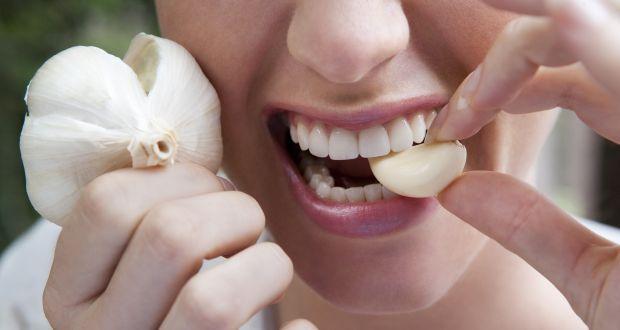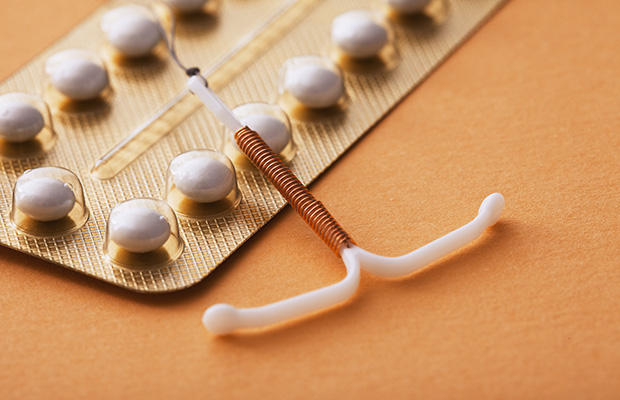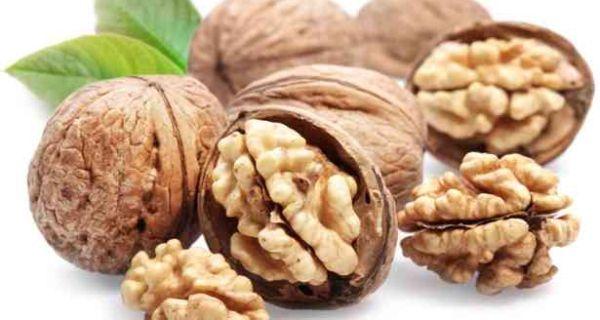How to Follow Dr. Atkins Diet
The types of food that you eat affect your weight. That's why certain diets, like the Atkins Diet, may help some individuals to lose weight. Follow the four phases of Dr. Atkins' diet carefully, as outlined in this article, to potentially lose a significant amount of weight.
Steps
Part 1 Understanding Atkins Basics
-
1
Prepare for the Atkins diet. The Atkins diet will require major lifestyle changes for most people. Try to make the transition as easy as possible.
- Set a healthy weight goal and acquire the right equipment.
- Use tools like a food journal and a carbohydrate counting guide.
- Talk to your doctor before starting the Atkins diet.
-
2
Understand the diet. The Atkins diet can be simple, however, it is unique. Learning about each phase of the diet will help you understand what to expect. This is the basic overview of the four phases:
- Induction. Elimination of carbs and the start of the diet. Realize that this will be the hardest part of the diet. This is where carbohydrate withdrawals can and will happen. Pay attention to your body and remember that these symptoms will pass.
- Ongoing Weight Loss (OWL). Slow introduction of carbs while still losing weight.
- Pre-Maintenance. Weight loss is slowed and you prepare to sustain the diet.
- Maintenance. After you have met your final goal, keep the weight off.
-
3
Learn about the benefits and risks. Like any diet, the Atkins diet can beneficial to your health. However, it may also have some risks associated with its methods. Review the following list of benefits and Risks:[1]
- Benefits
- Weight loss
- Improved cardiovascular health
- Improved cholesterol
- Risks
- Headache
- Dizziness
- Weakness
- Fatigue
- Constipation
- Pains or weakness in the calves and legs, especially when you lay down to sleep at night
- These look serious but they're mainly due to carbohydrate depletion and lack of fiber. The body will maintain balance shortly. In the interim, try a fiber supplement to alleviate constipation and a B12 vitamin supplement for fatigue.
- Benefits
-
4
Count carbs on the Atkins diet. Atkins focuses not on total daily carbohydrates but on daily net carbohydrates.Learn how to count net carbs by subtracting dietary fiber and sugar alcohols from the total carbohydrate count.[2]
- Find the number of total carbohydrates in a food on the food’s nutrition label.
- Find the quantity of dietary fiber in the food
- Subtract the amount of dietary fiber from the amount of total carbohydrates.
- Look for sugar alcohols. Sugar alcohols do not count against your net carb total.
- Use a carbohydrate-counting guide for further help.
-
5
Pick Atkins diet products and approved foods. Atkins International produces a variety of low-carb shakes and protein bars. Learn how to read the labels to determine the right products. Try some of the following foods that are approved by the Atkins diet.[3]
- Vegetables low in carbohydrates - these are the foundation of the Atkins diet
- All fish.
- All fowl.
- Meat and Eggs
- Fats and Oils
Part 2 Starting with Phase 1: Induction
-
1
Understand what the Induction phase entails. The Induction phase is designed to kick-start the Atkins diet by putting the body into a state of ketosis, which metabolizes stored fat. Some people lose as much as 15 pounds (6.8 kg) in 2 weeks, but only if they have an extreme amount of weight to lose, usually 100 pounds or more. It is normal to lose 4 to 6 pounds on Induction.[4][5]
- Ketosis occurs when your body has no sugar based energy and uses fat instead.
- Ketosis has some side effects such as nausea, headache, mental fatigue and bad breath. Not everyone enters Ketosis.
- It is not uncommon to get sick during any dietary changes, especially if you have been eating unhealthy foods for some time. Remember to hydrate your body, take your vitamins and get adequate sleep.
-
2
Focus on eating healthy carbs from vegetables as well as fat and protein during this phase. After removing unhealthy carbs, replace them with vegetables and some proteins and fats. Atkins is diet based on VEGETABLES, unlike any other diet out there. Eating more healthy carbs from vegetables will bring nutrition to your body and still let you lose weight. Try to eat the following foods to obtain these fats and proteins:[6]
- You can eat chicken, red meat, fish and eggs, including egg yolks.
- Aim for at least 4 ounces (113 g) of protein at each meal.
- You may enjoy fats including olive oil and mayonnaise during this phase.
- Consume more mono and polyunsaturated fats instead of saturated fats and trans fats.
- Avoid processed meats, as they may be cured with sugar and count as carbs.
-
3
Limit carbohydrates. The main focus of Atkins is to eat healthy carbs from vegetables. Strive to get 12-15 grams of healthy carbs from vegetables like leafy greens, cruciferous vegetables such as broccoli and cauliflower, and others listed on the Atkins Phase 1 (Induction) List here: https://www.atkins.com/how-it-works/atkins-20/phase-1/low-carb-foods. Keep the amount of other carbohydrates that you eat every day as low as possible. This will help you to lose weight at this stage of the diet.[7]
- Consume 20 grams of carbohydrates or fewer during this phase. 12-15 grams should come from healthy vegetables. Remember, Atkins is a VEGETABLE-based diet. No other diet puts such an important emphasis on healthy veggies!
- Avoid fruits and grains such as bread and pasta during Induction.
- Make sure that 12 to 15 grams of your daily carbohydrates come from foundation vegetables.[8]
- Foundation vegetables are vegetables with next to no carbohydrates. Examples include pickles, spinach, broccoli, sauerkraut, avocado, Daikon radish, red or white onion, and zucchini.
-
4
Eat often. Eat at least once every 2-3 hours when you are awake. You can choose to eat five to six smaller meals to jump-start your metabolism. Eating only 3 times per day will not yield as good results for most people, though it will still work.[9]
- When you do eat, make sure to only eat until you feel full.
- Do not overindulge.
-
5
Snack during the Induction phase of Atkins. Eat at least one mid-morning and one mid-afternoon snack to help conquer cravings and to help maintain energy levels. Keeping energy levels up is important.[10][11]
- Choose snacks that are high in fat and protein. Fat and protein help to maintain blood sugar and extend satiety. This is critical during any weight loss program, but especially in one where carbohydrates are limited.
- Make sure your snacks have minimal carbohydrates.
- Don't be afraid to make changes to how you were snacking before.
- Try snacks such as vegetables with hummus, a deviled egg, or even beef jerky.
- 6 Monitor water intake. Drink 64 fluid ounces (1.9 L) of water daily during your low-carbohydrate diet. In addition, drink 2 cups of broth or eat 2 tablespoons of soy sauce to help your body retain sodium and potassium.[12]
-
7
Survive the first ten days of an Atkins diet. Surviving the big changes of the first days of Atkins may require support. Preparation for certain physical challenges, like lagging energy and dizziness, is also important.[13]
- Watch your food budget to accommodate for more vegetables, protein, and other whole foods.
- Keep your meals interesting by trying new foods that fit with the Atkins diet.
-
8
Avoid the pit-falls of the Atkins diet. Certain uncomfortable physiological symptoms and potential nutritional deficiencies can be avoided by taking a few precautionary measures while you’re on the Atkins diet.[14]
- Avoid staying on Induction for more than 2-4 weeks. Some people try to stay on Induction for months or even a year or more, and this is VERY unhealthy for your body. In fact, it is NOT recommended by Atkins nor anyone at Atkins. If you are on Induction for longer than a month, you are no longer doing Atkins. Atkins insists on moving forward and adding more healthy carbs back to your diet.
- Drink plenty of water.
- Take supplements such as vitamins and minerals.
- Get plenty of rest.
- Eat plenty of fiber
-
9
Determine whether you’re ready to move on to the next phase. Monitor your weight and pay attention to exactly how much you have lost. Weight loss is NEVER the only gauge and tell if you it's time to move on to the next Phase of the Atkins diet. Remember to take measurements, check how your clothes fit, and if you have been on Induction for a month, move on to the next Phase. [15]
- There is NO minimum weight loss to reach before moving on to step 2.
- Stay in Phase 1 for NO MORE than 4 weeks.
- You should NEVER stay on Inductions for 6 months or more. That is NOT Atkins. Anyone who states that you "should" lose a certain amount of weight like 15 pounds or that you should stay on Induction for 6 months or a year is NOT doing Atkins. They are advocating a dangerous and unhealthy diet. Please consult Colette Heimowitz, the nutritional expert at Atkins for more information.
Part 3 Moving on to Phase 2: Ongoing Weight Loss
- 1 Understand Phase 2. You should continue to lose weight during Phase 2, but the weight loss may occur at a slower pace than it did during Phase 1. During Phase 2, add 5 grams to your daily carbohydrate total each week as long as you continue to lose weight.[16]
-
2
Begin to add foods back into your diet. The critical rule is to not exceed your maximum number of allowed daily carbohydrates. You can add the following foods at this point:
- Nuts
- Fruits
- Soft cheeses
-
3
Add more carbohydrates. Boost the quantity of carbohydrates that you eat based on your body’s reaction. If you stop losing weight after eating 30 grams of carbohydrates daily, then you should scale back to 25 grams. You may, however, eat as much as 50 grams as long as you continue to lose weight.[17]
- Adjust your carbohydrate intake according to weight loss or gain.
- If weight gain occurs, lower the level of carbohydrate intake.
-
4
Combat constipation on Atkins. Diets low in carbohydrates tend to be low in fiber, which will contribute to constipation. However, you can combat these symptoms by taking the following actions:[18]
- Drinking plenty of water.
- Eating foods containing healthy carbs and fiber, like vegetables.
- Take a fiber supplement or a probiotic.
- While Atkins does not require you to exercise, it does encourage it as you will not only have more regular bowel movements if you do engage in regular exercise, but there are tons of other healthy benefits of exercising. Exercising and lifting weights will also help you avoid baggy skin or other issues that can occur if you have a lot of weight to lose.
-
5
Stick to the Atkins diet. You may encounter weight loss plateaus. Feeling like you are getting stuck on one of these plateaus can be demoralizing. However, most people define a "plateau" as not seeing the scale move for 2 or 3 days. An actual plateau means there is no loss in weight or inches for at least 2 weeks. You can encourage yourself through these tough moments by taking the following actions.
- You can focus on the other benefits of the diet, such as lost inches and added energy.
- Compare your blood tests from now to before you started Atkins. You should notice a positive change in your good cholesterol and a drop in your triglycerides.
- It is important to note that plateaus are not always a bad thing. Plateaus can sometimes be the body's way of adjusting to the new body weight and creating a new 'normal.' Embrace plateaus!
-
6
Balance sugar on the Atkins diet. Calorie-free sugar substitutes can do wonders for baked goods and for beverages.[19]
- Watch for hidden sugars by reading labels on your food.
- Be careful with labels such as "No sugar added". This does not mean "No Sugar"
- Try using sugar replacements such as Stevia or Splenda (in small amounts).
-
7
Fight carbohydrate cravings on Atkins. Sometimes, cravings for carbohydrates are actually thirst in disguise. At other times, you may simply be craving the experience of eating or the habit of eating more than you are actually craving food. Learning to recognize your true hunger signals and how to strategically handle cravings will ensure that you are successful while following the Atkins diet.
- Pay attention to your body's signals to see if you are actually experiencing hunger.
- Plan your meals ahead of time if possible and eat every 2-3 hours. This should stave off severe hunger. As your metabolism speeds up and you become used to eating throughout the day, you may find yourself beginning to get hungry every 2-3 hours. This is natural. Just eat your healthy snack or meal and enjoy!
-
8
Order Atkins-friendly meals at restaurants. You can still enjoy eating out even when you are on the Atkins diet. Most restaurants serve low-carb options and are willing to accommodate special requests. Atkins is one of the EASIEST diets to maintain when eating out. [20]
- Always order a salad or extra portions of vegetables at your meal. Restaurants will often replace the side carbohydrate (baked potato or rice) with a double portion of veggies.
- Skip the bread basket. If the waiter brings one, just ask that it be removed from the table.
- Be aware of what you are ordering, avoid any items high in carbohydrates.
- If you aren't sure about an item, ask for more information.
-
9
Balance vitamins and minerals on the Atkins diet. One of the main concerns of following a low-carb diet is that the lack of certain vegetables and fruits, particularly during Induction, can cause you to be deficient in vitamins. Also, low-carb diets tend to cause your body to shed sodium and potassium. Avoid these side-effects by taking the following actions: [21]
- Eat a large variety of foods and take supplements.
- Taking sodium in the form of broth, soy sauce or salt will also keep your kidneys healthy.
Part 4 Entering Phase 3: Pre-Maintenance
- 1 Know when to start Phase 3. Phase 3 should begin when you are about 10 pounds (4.5 kg) from your goal weight. You will start adding carbohydrates back to your diet until your weight loss slows to a crawl.[22]
-
2
Add more carbohydrates to your diet. Eat an additional 10 grams of daily carbohydrates per week. Watch the scale and pay attention to your cravings so that you know when you are eating too many carbohydrates.[23]
- Weight gain indicates too many carbohydrates are being consumed.
- Weight loss should slow greatly during this stage, but still be at a loss.
-
3
Add foods one at a time. If certain foods make you start to gain weight, then you will have to eliminate the foods from your diet. Watch the scale carefully for any fluctuation.[24]
- During diets such as these, you've unintentionally created an elimination diet-type environment for your body. This is a good thing! This means that your body has been rid of the foods/substances that had been plaguing it before. So, when adding foods back in, do them one at a time so you know how each food impacts your body.
- 4 Eat a wider variety of carbohydrates. In Pre-Maintenance, you can add starchy vegetables, such as sweet potatoes and winter squash, and whole grains like oatmeal back into your diet. Again, keep a close eye on your weight as you add more variety of carbohydrates.[25]
Part 5 Continuing to Phase 4: Maintenance
- 1 Understand phase 4. During Phase 4, you will discover your Atkins carbohydrate equilibrium so that you can maintain a healthy weight throughout your life. Balance and careful attention to your carbohydrate levels are key in this stage, as well as paying special attention to how different foods affect your health and overall well-being. [26]
- 2 Focus on Maintenance as you begin Phase 4. You do not "stop" the Atkins diet - it is a healthy plan that can be continued life-long. Continue to eat plenty of vegetables as well as fat and protein during the Maintenance phase of the low-carb diet even as you add more carbohydrates back to your diet.At this stage of the diet, Atkins is extremely similar to what is known as Clean Eating, a diet that has been used by body-builders and health and fitness proponents for decades. It is a very healthy lifestyle.
-
3
Adjust the amount of carbohydrates that you eat. You can add carbs to your diet as long as you don’t deviate from your goal weight. This helps you find your equilibrium number.[27]
- If you notice weight gain, scale back the amount of carbohydrates you are consuming.
-
4
Give yourself more space in your diet. You can enjoy the occasional slice of pizza or chocolate cake during Maintenance. Make sure the splurge happens only occasionally and you aren’t tempted to continually overindulge.[28]
- Overindulging will undo all of your hard work.
-
5
Monitor your weight. If you gain or lose more than 5 pounds (2.27 kg), then you need to lower or increase your carbohydrate intake to compensate.
- Pay careful attention to your weight and the connection to the foods you are eating. Over time you will have a clear understanding of how different foods affect you and you will no longer have to measure or weigh food or monitor it as often.
Part 6 Varying the Atkins Diet
-
1
Learn how to add variations to your diet. As long as you stick to the principles of low-carb, high protein and fat eating, you can make some variations on the Atkins diet and still lose weight.
- People say boredom causes more people to rebound from diets than anything else, but in the case of Atkins it is actually lack of following the diet appropriately. They feel so deprived during a diet that they binge when they get off of it. This has to be a lifestyle with small splurges in moderation. Staying on Induction for too long and not adding more foods and carbs back to your diet as prescribed in Atkins is NOT Atkins. It is a very unhealthy version of dieting and should be avoided. Following Atkins is very healthy and safe and will ward off boredom.
-
2
Jump-start the Atkins diet. Dr. Atkins prepared a section in one of his earlier books about a technique called the Fat Fast, which is based on the Kekwick diet. This jump-start method is only for people who follow Induction to the letter and cannot lose weight because of metabolic resistance.
- The vast majority of dieters should simply start with Induction.
-
3
Use Dr Atkins' diet as a vegetarian or vegan. You can do Atkins as a vegetarian or vegan, though you'll need to start at Phase 2 with around 30 grams of healthy carbohydrates per day. This article will help you to identify good sources of protein and fat. You’ll also learn exactly how to get started with Atkins depending on your weight loss goals.
- Choosing good vegetable proteins and fat sources will enable you to follow Atkins even if you don’t consume animal protein.
- Many plant proteins contain carbs. This may cause you to skip the induction phase.
- You can start with OWL or Pre-Maintenance and still meet your weight loss goals.
-
4
Understand the Eco-Atkins diet for weight loss. While no official guidelines for Eco-Atkins have been issued, there are still some guidelines to follow.[29]
- Eat 25 percent of your calories from carb-rich foods.
- Eat 30 percent of calories from proteins.
- Eat 45 percent of calories from vegetable fats.
-
5
Modify the Atkins diet and still lose weight and inches. You can modify Atkins to match your own weight loss goals, regardless of the amount planned. The Atkins diet is modified by starting or maintaining a certain phase for differing periods of time.[30]
- For small weight loss goals, you may start with Pre-Maintencance or OWL.
- For large weight loss goals start with Induction and move on to the Phase 2 after 2-4 weeks.
-
6
Begin the new Atkins Advantage 12-week program. This article will teach you how to get started with Atkins Advantage. The new Atkins Advantage program can take you through a 12-week cycle of the Atkins diet starting with Induction and ending with Maintenance.
- The new Atkins Advantage also includes exercise tips and journaling ideas to help your mental and emotional outlook.
Related Articles
-
How Fat Can A Model Be?
Filippa Hamilton is a famous 5-foot-10, 120-pound French model w
-
The Obesity Crisis
This useful infographic is titled “The Obesity Crisis: H
-
The Surprising Thing That Will Up Your Fitness Game
Whether youre training for your first triathlon, looking to lose a few
-
Great Advice To Help You Lose The Excess Weight!
TIP! One smart idea for weight loss is joining a company like
-
Tips To Consider When Experiencing Hair Loss
Losing hair is a part of life that many people have to deal with.
-
These 5 Weight Loss Drugs Really Work—But Heres What Else You Need To Know
If the term "weight loss drug" kind of scares the crap out o
- DON'T MISS
- Exposing Easy Tricks To Weight Loss
- Fast Weight Loss - Usually a Dumb Idea, But Some Tips Anyway
- The Weirdest Diet Mistake Weve Ever Heard
- Veggie Christmas Tree
- Best Remedies For Obesity And Weight Loss Plans
- Natural Weight Loss
- Detox Diets For a Healthier Lifestyle
- 6 Eating Mistakes Keeping You At A Heavier Weight Than Youd Like
- Health Is Wealth- Some Weight Loss Tips And Diet Plans
- Weight Loss For All The Wrong Reasons




